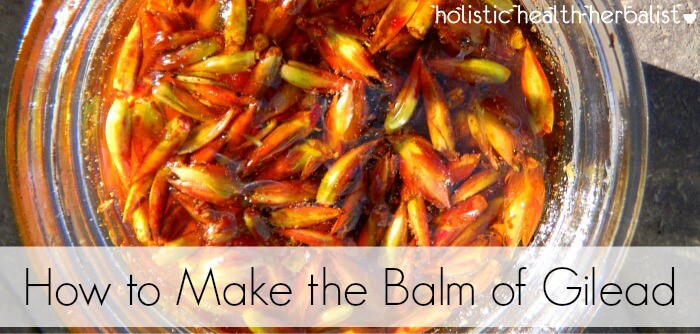
The coming of spring is always an exciting time of year for the herbal enthusiast. Here in Southern California, most herbs that tend to bed down for the winter are still flourishing, if not a bit closer to earth, nourishing their roots for spring’s exuberant arrival. There is one herb, or rather a tree, that buds only this time of year no matter how cold the weather gets, and that’s cottonwood.
Cottonwood, aka Poplar, is an amazing tree you may only glance at on occasion but deserves far more attention. For you see, the cottonwood gives us a multifaceted medicine that’s an incredible healer for countless skin ailments, sore muscles, restless sleep, and a whole lot of other good things.
Apart from looking awkward sneaking around the neighborhood snagging gooey cottonwood buds, you can often find poplars near natural springs and canyons. My parents have quite a few poplar trees on their property (lucky them, and they don’t even know it) so it’s easy to call up my mother and ask her if the trees have started oozing. Besides that obvious indication of harvest time, cottonwoods will also give off a pleasant aroma that can only be described as “fresh and woodsy with vanilla undertones”. It’s sort of amazing and is reason enough to make The Balm of Gilead.
How to Make the Balm of Gilead
So who or what is Gilead anyways? If you are familiar with Biblical lore, Gilead was a mountainous region east of the Jordan River that was well known for its spices and healing ointments. “The Balm of Gilead” was one such ointment believed (metaphorically) to have healing and soothing powers. There are a number of references in the Bible as well that are interesting to read:
"Balm of Gilead" has three references in the Bible. In Genesis 37:25, as Joseph's brothers contemplated how to kill him, a caravan of Ishmaelites passed by on their way to Egypt from Gilead. In their cargo were “spices, balm, and myrrh.” Jeremiah 8 records God's warning to Judah of what Babylon would do to them. Upon hearing the news, Jeremiah laments, "Is there no balm in Gilead?" (verse 22). His question is a poetic search for hope—a plea for healing. Then, in Jeremiah 46:11, as God describes an impending judgment on Egypt, He taunts them: "Go up to Gilead and obtain balm, O virgin daughter of Egypt! In vain have you multiplied remedies; there is no healing for you!"
Pretty neat right? The resin exuded from cottonwood buds is referred to as the Balm of Gilead because of its healing properties and pleasant resinous aroma.
Balm of Gilead Recipe
This recipe is really simple to make! All you need are three ingredients:
• Fresh gooey fragrant cottonwood buds
• Extra virgin olive oil (can sub sweet almond or refined coconut oil)
• Beeswax
Loving Preparation - Balm of Gilead
• Harvest enough cottonwood buds to fill half a mason jar
• Pour the oil over the buds until you reach the shoulder of the jar
• Cap tight and put in a warm sunny windowsill or warm area of the house for 4-6 weeks
• Once 4-6 weeks have passed, strain the oil through a nut milk bag (I keep one specifically for herbal preparations) into a large pyrex measuring cup
• Begin to heat a double boiler then add 1oz of beeswax and let it melt
• Next, add in 1 cup of the cottonwood oil infusion
• You can also add one capsule of Vitamin E oil for extra moisture if desired (you can also add essential oils at this point as well once the heat is turned off)
• Once everything is melted and mixed together you can pour it into little salve containers
• Allow to cool completely before use
The remaining oil can be stored for up to a year if kept in a cool dark place.
This recipe fills four 2oz salve containers plus two lip balm tubes (which are super handy to have in your pocket or purse).
***NOTE
You can make this process go a whole lot faster if you need to by putting the fresh cottonwood buds into a double boiler with the olive oil. Just measure out 1 part cottonwood buds and two parts oil to get a good strength. Simmer this for 1 hour and strain.
Personally, I prefer to make the Balm of Gilead using the folk method (waiting 4-6 weeks) before straining because it helps retain the wholesome healing goodness of the cottonwood resin.
[yumprint-recipe id='105']
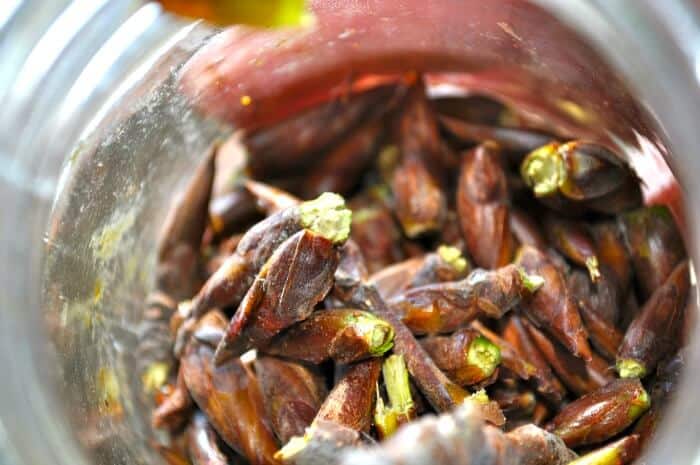
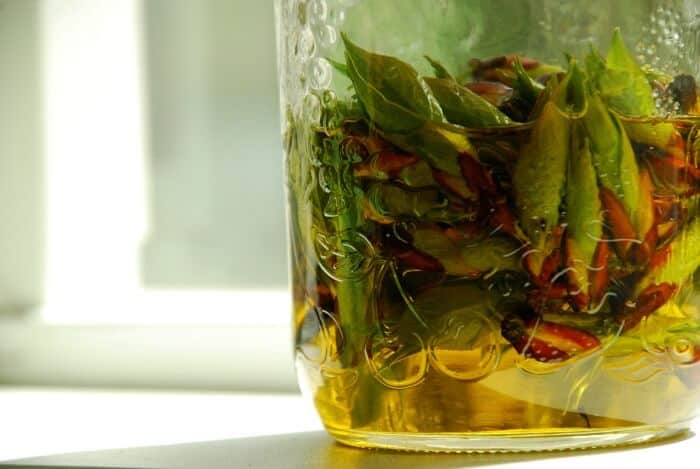
The Healing Properties of the Balm of Gilead
You may be wondering why you should be making this recipe, so let me fill you in!
The Balm of Gilead has amazing anti-inflammatory, analgesic, and anti-rheumatic properties making it perfect for athletes or for those who lead active lifestyles. It relieves the pain associated with sore muscles, bruising, general aches and pains, and arthritis. In fact, if you make this simple salve with cayenne pepper added to it, it is REALLY amazing for all kinds of pain.
You can also apply this balm to bites, stings, rashes, burns, cuts, scrapes, dry scaly skin, abrasions, chapped skin, diaper rash (make sure there is NO cayenne for this application obviously), as well as eczema, psoriasis, and minor wounds.
Smelling its aroma is a fantastic mild sedative before bedtime. I use it this way by applying a small amount under my nose before opening a book to read at bedtime. It works so well and the smell is just wonderful for stress relief. Plus, it keeps your nose hydrated during the winter!
I really hope you give this balm recipe a try! You won’t regret it 🙂 Also, in case you want a cottonwood tincture recipe, check out my post HERE.
For more great Balm of Gilead recipes and info please look below:
Cottonwood Buds: The Balm of Gilead and Tincture
Cottonwood Bud Salve
Harvesting Balm of Gilead for pain and inflammation
BENEFITS AND USE OF BALM OF GILEAD
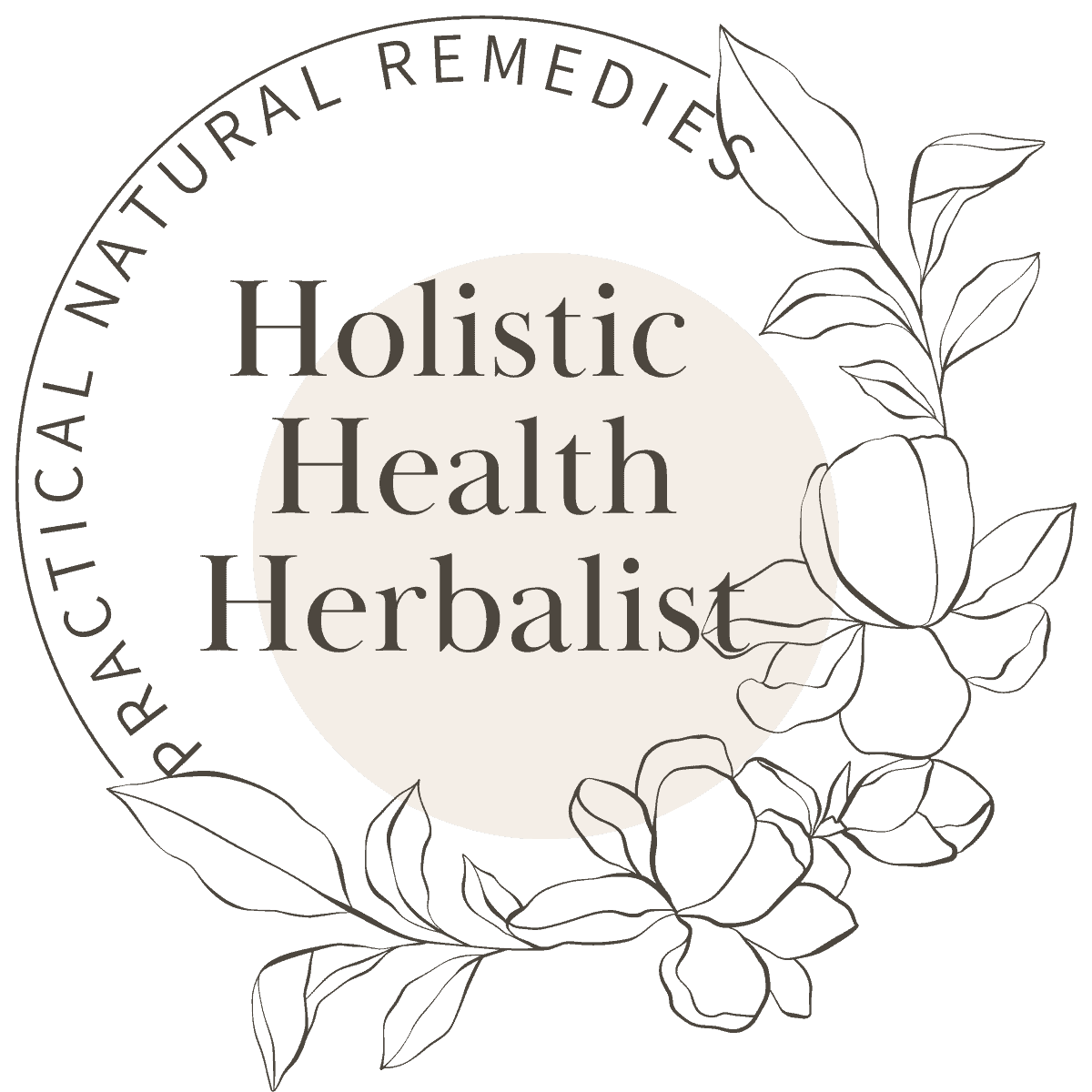

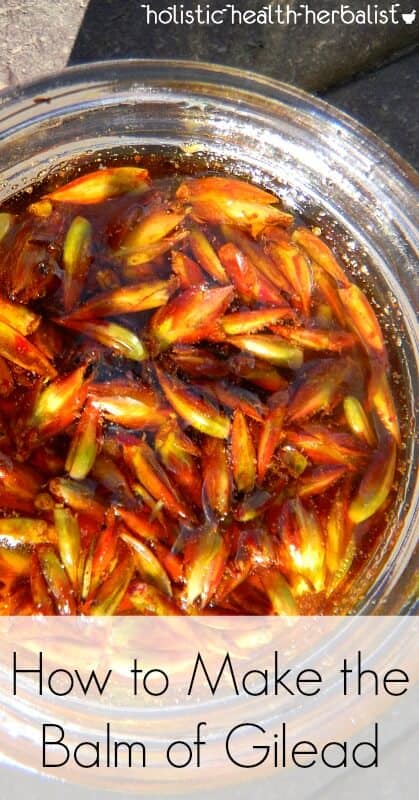




Heather M says
I purchased cottonwood bids on Etsy but they have been dried, can I still make balm of gilead with it?
Sheri says
I live in New Jersey and we have Cottonwood Trees here. Is there a particular type of Cottonwood tree that you have to use? it seems that most of these recipes use cottonwood buds from Northwest.
Brandi says
Where can I purchase these buds I'm not physically able to go pick them. I live in coastal Va.
Tash says
Hi Brandi!
I actually got mine on Etsy! 🙂
antonia says
Hello
What is a nut milk bag I am from the netherlands and nobody knows nut milk bag. Is there an alternativ for it
Thank you
Tash says
Hi antonia!
I'll link you to one: Nut Milk Bag. It's basically like cheesecloth but much finer so you can strain liquid 🙂
DavetteB says
Everyone here in AK hates cottonwood because of the snowy blowy mess it makes everywhere, so it gets cut down a lot. It also gets blamed for allergies even though the weatherman said it has almost no allergens; they come from other trees blooming the same time. A friend offered me to pick their tree but the snow hadn't melted before the buds opened so there was no way for me to get them. Hoping for a better chance this year; I'm always on the lookout for the next pain salve.
I infuse my oils in my crockpot (you know the little useless one that comes with the real one - holds a mason jar or a sauce jar) double boiler on Low; doesn't get too hot but faster than doing in a cupboard.
Chris says
Hi, Tash, thanks for sharing a link to my blog with your recipe. I appreciate the love. Awesome article. I'm going to share your post on my Facebook page this weekend.
Tash says
You're very welcome Chris! Your article was so informative! I'll share your stuff too 😀
savvy says
Love your article! How do I identify cottonwood tree. I live in Michigan
Thanks!
Tash says
Hi Savvy!
Here's a few links 🙂
https://en.wikipedia.org/wiki/Populus_deltoides
Picture identification for Cottonwood
Jean says
You stated that cottonwood trees are actually the same as poplar trees , is that correct? I live in Eastern Canada, and poplar trees we have a plenty. Could I make this balm with poplar buds? Come spring of course. We,re under 4 feet of snow at present .
Tash says
Hi Jean!
Yes, they are the same tree so yes you can make this balm with poplar buds 🙂 And goodness! That sounds like a lot of snow!
Michelle says
Where would I find cottonwood bulbs??
Tash says
Hi Michelle!
Where do you live?
Michelle says
Hi,
I live in New York State.